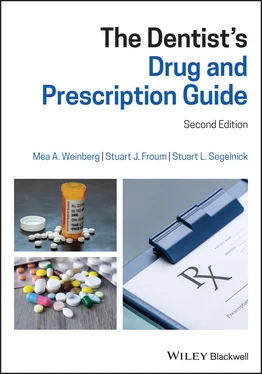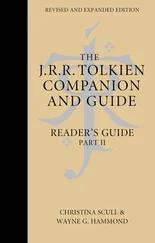18 A. There may be a prolonged bleeding time (altered platelet aggregation) due to uremia (syndrome associated with fluid, electrolyte, and hormone imbalances and metabolic abnormalities). The platelet and hematocrit levels should be known especially if bleeding during dental treatment is anticipated. Thus, a consultation with the patient's nephrologist is required before any type of dental surgery.
19 Q. If a patient with a kidney transplant requires antibiotic prophylaxis, which antibiotic is recommended?
20 A. For antibiotic prophylaxis, no dosing adjustments are required for azithromycin or clindamycin. Amoxicillin requires dosage adjustments. If the patient is taking cyclosporine after the kidney transplant, then clarithromycin and erythromycin should not be prescribed due to the risk of cyclosporine toxicity.
21 Q. Should fluoride topical products such as PreviDent® be prescribed to a patient with renal disease?
22 A. No. PreviDent contains 1.1% sodium fluoride, which is indicated for the prevention of tooth decay, reducing dentinal hypersensitivity and remineralization. Topical fluoride should never be swallowed; it is toxic. Topical fluorides should not be prescribed to a patient with kidney disease because fluoride is highly excreted by the kidneys so the risk of toxicity is greater in patients with impaired kidney function.
23 Q. What are the treatments for renal disease?
24 A. Treatments for renal disease include monitoring with diet control, hemodialysis or kidney transplant. Most patients undergo hemodialysis rather than peritoneal dialysis.
25 Q. How often does a patient usually have hemodialysis?
26 A. Every 2–3 days for 3–5 hours.
27 Q. How soon after a patient undergoes hemodialysis should they have dental procedures?
28 A. A consultation with the patient's nephrologist is necessary. Because of the increased risk of bleeding, it is best to see the patient on days when they are not undergoing dialysis. Heparin, an anticoagulant, is injected into the patient before dialysis to facilitate blood cycling through the dialyzer. If heparin has a half‐life of four hours, then it takes about five half‐lives to be completely eliminated from the body, about 20 hours. It is best to treat the patient one day after hemodialysis.
29 Q. Is antibiotic prophylaxis required for a patient having hemodialysis?
30 A. It is suggested to have a consultation with the nephrologist regarding this because there are many medical conditions that may require antibiotic prophylaxis. During hemodialysis, a surgically produced arteriovenous fistula is made, which may be susceptible to infection.
31 Q. How do I prescribe medications for a patient with kidney disease?
32 A.Inappropriate dosing in patients with chronic kidney disease can cause toxicity or ineffective therapy. Dosages of drugs cleared renally are based on renal function (calculated as GFR or CrCl). Dosing guidelines are divided into three broad GFR categories:<10 mL/min/1.73 m210–50 mL/min/1.73 m250 mL/min/1.73 m2It is advisable to contact the patient's physician and a pharmacist when prescribing medications. The type and severity of renal impairment must be determined. It is most important to obtain a copy of the patient's blood test to determine the GFR, which is the most reliable value for overall kidney function.
33 Q. Can local anesthetics be administered to patients with chronic kidney disease?
34 A. All amide local anesthetics including lidocaine and all other injectable anesthetics are metabolized by the liver. No adjustments are needed.
35 Q. Are most antibiotics safe to prescribe in renal disease?
36 A. See Table 3.18. Many antibiotics can induce renal dysfunction. Acute tubular necrosis (ATN) and interstitial nephritis are the most common types of acute renal failure associated with antibiotic use. Acute interstitial nephritis may occur within minutes of drug exposure or may not develop for several months. Preexisting renal disease, dose, duration, and prior exposure to the offending antibiotic may increase the susceptibility of patients to acute interstitial nephritis. Some antibiotics that can cause this adverse effect include penicillin, amoxicillin, and fluoroquinolones. Tetracycline is contraindicated in patients with renal disease and may cause renal failure because it is 50–60% eliminated through the kidneys (Miller and McGarity 2009). Azithromycin, clindamycin, and doxycycline do not require a dosage or interval change and are safe to use. Doxycycline is only 20–30% eliminated through the kidneys, so no dosage adjustment is needed.
Table 3.18 Severity scale for renal disease
Source: Adapted from National Kidney Foundation ( https://renal.org/information‐resources/the‐uk‐eckd‐guide/ckd‐stages).
| Grade (severity) |
Glomerular filtration rate (GFR) |
Creatinine clearance (CrCl) |
| Mild |
20–50 mL/min/1.73 m 2 |
1.7–3.4 mg/dL |
| Moderate |
10–20 mL/min/1.73 m 2 |
3.4–7.9 mg/dL |
| Severe |
<10 mL/min/1.73 m 2 |
>7.9 mg/dL |
| Stage |
Severity |
GFR |
| Stage 1 |
Normal or increased GFR |
≥90 mL/min/1.73 m 2 |
| Stage 2 |
Mild |
60–89 mL/min/1.73 m 2 |
| Stage 3 |
Moderate |
30–59 mL/min/1.73 m 2 |
| Stage 4 |
Severe |
15–29 mL/min/1.73 m 2 |
| Stage 5 |
Kidney failure |
<15 mL/min/1.73 m 2 |
3.6 Patients with Hepatic Impairment
1 Q. Why is it important to consult a physician for a patient with chronic liver disease?
2 A. Liver disease can increase the risk of bleeding, especially in patients taking warfarin and low molecular weight heparins (LMWHs). It is important to get the results of the patient's liver function tests, which is an overview of how the liver is functioning. Albumin, bilirubin, and prothrombin time (PT) measure the function of the liver and the capacity to make enzymes. These enzymes include alkaline phosphatase (AP), aspartate aminotransferase (AST), and alanine aminotransferase (ALT), which indicate if there has been any damage to the liver cells but not the function of the liver. Elevated levels of enzymes indicate liver damage. A prolonged PT indicates a deficiency in one of the clotting factors.A complete blood count (CBC) including platelets is important because in liver disease there is usually bleeding with a decrease in platelet count (thrombocytopenia). Additionally, many drugs are metabolized by the liver so if the patient has a compromised liver, some antibiotics and analgesics may need to have dosage adjustment or another drug must be prescribed.
3 Q. What is the mechanism of increased bleeding?
4 A. The liver produces clotting factors II, V, VII, IX, and X. Vitamin K is the cofactor required to synthesize these clotting factors. Severe liver disease leads to lower levels of vitamin K, resulting in less production of clotting factors. Bleeding will happen with an international normalized ratio (INR) >1.5. However, the prothrombin time (or INR) is considered to be abnormal when about 80% of liver function is lost, which is considered to be severe liver disease. Often, the patient will have gingival bleeding and bruises. Partial prothrombin time (PTT) is a test that determines how long it takes for the blood to clot and is measured in seconds.Levels of albumin, a water‐soluble, coagulable protein, may decrease, which will lead to a decrease in clotting ability.
5 Q. Does liver disease alter the response to drugs?
6 A. Yes. Liver disease, including hepatitis and cirrhosis, may alter the response to drugs. Drugs that are primarily cleared by the liver may require dosage adjustment in patients with hepatic impairment. However, before changes in drug metabolism occur, liver disease must progress to the level of “severe.” Consultation with the patient's physician is necessary before drug prescribing.
Читать дальше












